NOVEMBER 20, 2022 : Today we did a self-guided introductory tour of Athens visiting the classical sites. We quickly understood, that in order to visit Athens, you need to develop a whole new vocabulary. For example, Acropolis basically means upper city. In Athens, it refers to the whole complex at the top of the hill. The Parthenon, a temple dedicated to the goddess Athena, is one of the buildings located in the Acropolis. Propylon is an outer gateway standing before the courtyard of a temple. In Athens it refers to the building that you walk through to reach the Acropolis. The Agora, which lies at the bottom of the hill the Acropolis is on, is the place where meetings and commerce occurred. It was the heart of public life in the city. Stoa is a covered walkway in the Agora.
Many of the ancient buildings had columns, and columns are either Doric, Ionic or Corinthian.

We left our apartment a little after 9:00. It was a Sunday morning and the streets were empty. Our first stop was Monastiraki square. Now, with few people, it was a very different place than the day before. Adjacent to the square is a flea market that is supposed to be particularly good on Sundays. We were surprised to find everything still closed. It was too early.
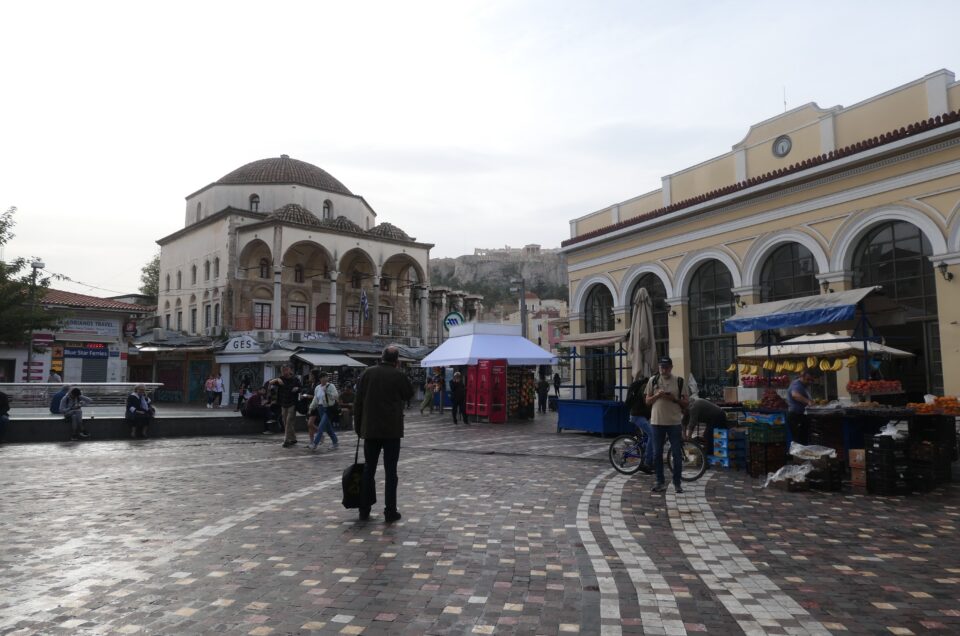
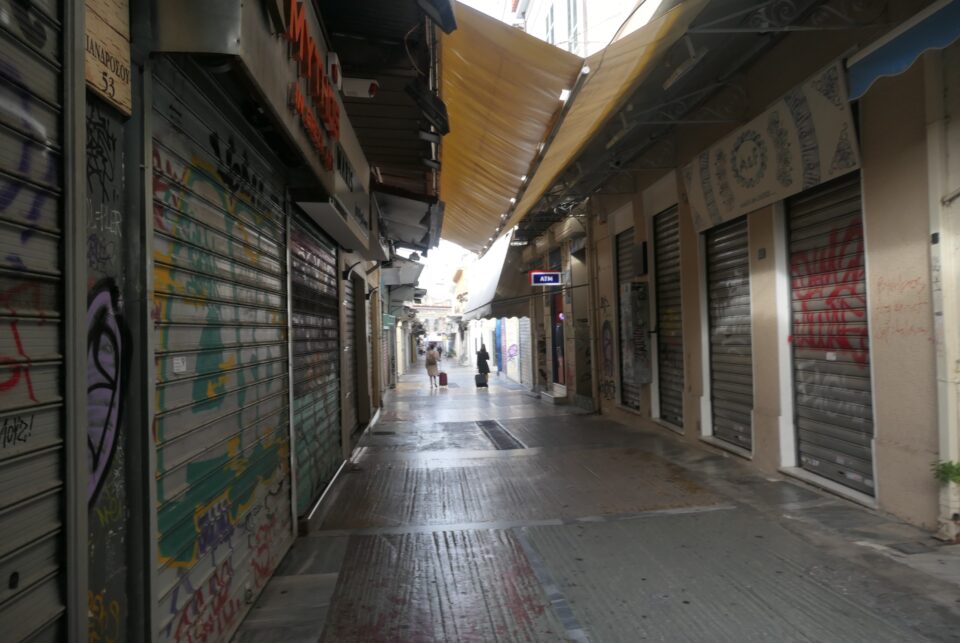
We continued onward to the Ancient Agora of Athens. The Agora covers a large area at the base of the hill of the Acropolis. In the Agora are the remains of many buildings and structures. On the west side, the Temple of Hephaestus stands out. Completed in 415 BCE, it is a well-preserved Greek temple dedicated to Hephaestus, the patron god of metal working, craftsmanship, and fire. The many columns of the temple are Doric.



At the opposite side of the Agora, is the Stoa of Attalos, a stoa lined with shops built in the 2nd century BCE which was reconstructed and is now used as the Museum of the Ancient Agora.
Among the many archeological ruins between these two, was the Metroon (another word to learn). A metroon was an ancient Greek temple dedicated to a mother goddess. The Metroon in the Athens Agora served two functions – it was both a sanctuary of the Mother of the Gods and the archive building of the city, a repository of official records. After it was destroyed in 267 CE by the Heruli (an early Germanic people that raided cities in the Roman Empire), it is thought that what remained of the large building was perhaps used for a time as a synagogue. Among the ruins of the Metroon, they discovered a rock with a menorah carved onto it. It is believed that Jews have lived in Athens since the third century BCE.
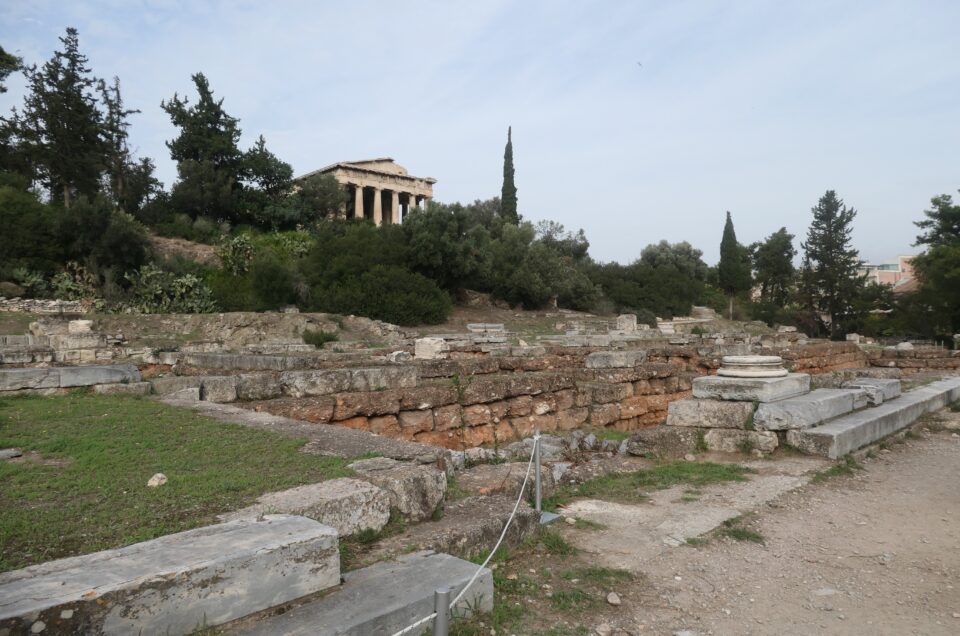
After strolling through the many ruins, we entered the museum. The museum is one very long hallway displaying the artifacts found in the Agora over different time periods arranged in chronological order. Some of the exhibits were unique and fascinating. For example, they showed how over 2500 years ago, people were selected for jury duty by using a kleroteria (another new word). A kleroteria is a slab of stone with many narrow slots aligned in horizontal rows. Into each slot was placed a bronze identification ticket of the citizen that was eligible for jury duty. There was a pipe attached to the stone into which black and white balls were randomly inserted. The balls were released one by one and corresponded to a row of identification tickets. When a white ball was released, the people who had their tokens in that row were selected. If a black ball emerged, they were not. This process continued until the required number of citizens were chosen. Amazing.
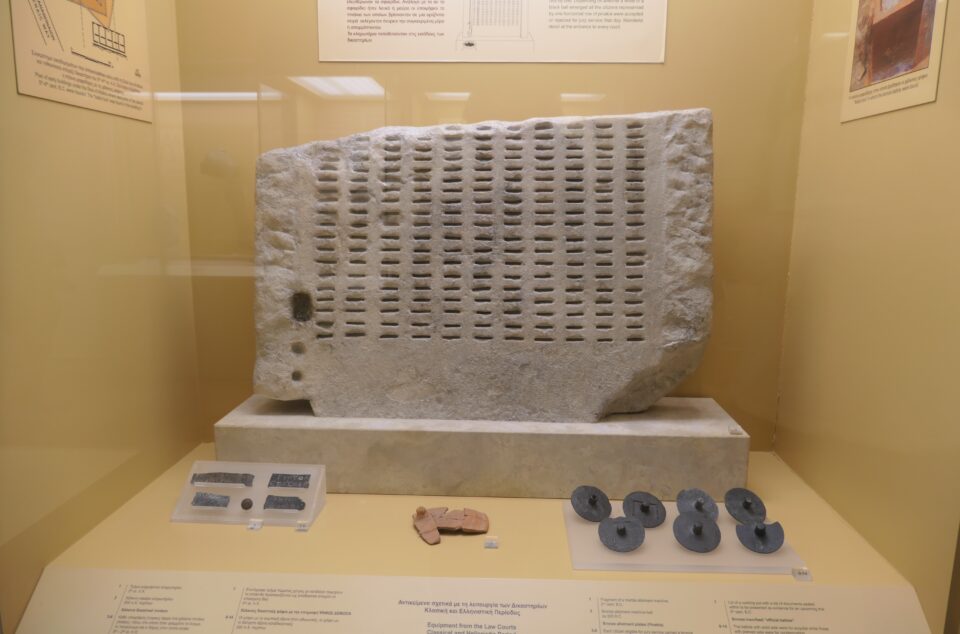
Once we finished visiting the museum, we made our way uphill to the Acropolis. There was a long line to buy tickets, but it moved quickly. We entered the site, but before actually going into the Acropolis, we first visited the Odeion of Herodes Atticus. Odeion (another new word) was a building used for musical activities, usually smaller than a theater. The odeion on the side of the hill of the Acropolis, was built by Herodes Atticus in memory of his wife. It has 39 rows of seats and can sit 6000 spectators. The marble seats were reconstructed in the 1960’s and is used for concerts till today.
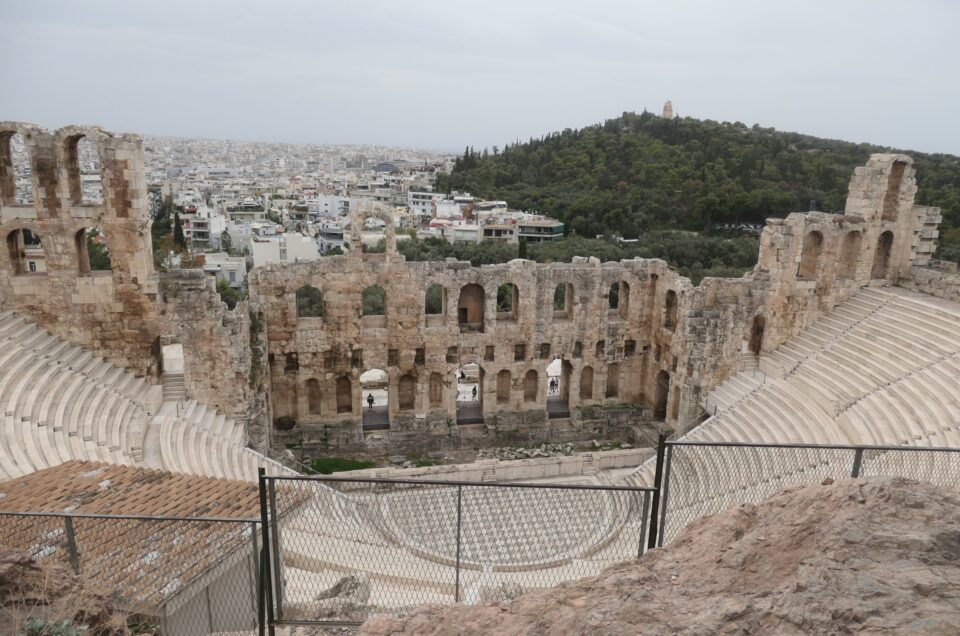
From the Odeion, we made our way to the Acropolis, passing through the propylon (the entrance gate). In the Acropolis there are three main buildings – the Temple of Athena Nike, the Temple of Erechtheum and the Parthenon.
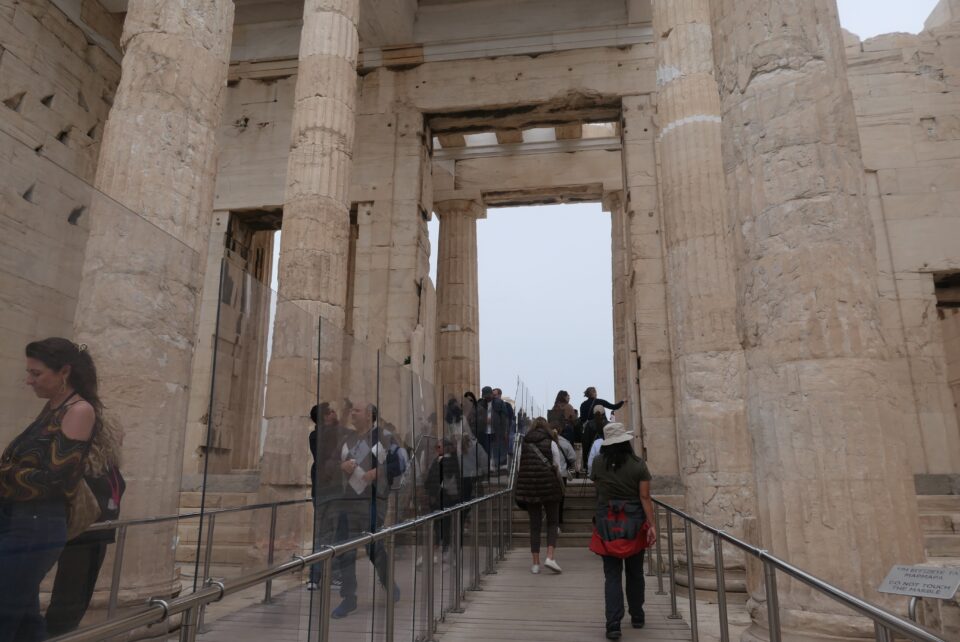
The Parthenon, the largest of the three, is a splendid marble temple built between 447 and 432 BCE. during the height of the ancient Greek Empire. It is dedicated to the goddess Athena. It is made with doric columns – eight columns on the front and back, and seventeen columns on the sides. This was the largest and most lavish temple the Greek mainland had ever seen. It is considered a masterpiece of engineering – for example the columns are slightly tapered to give the temple a symmetrical appearance.
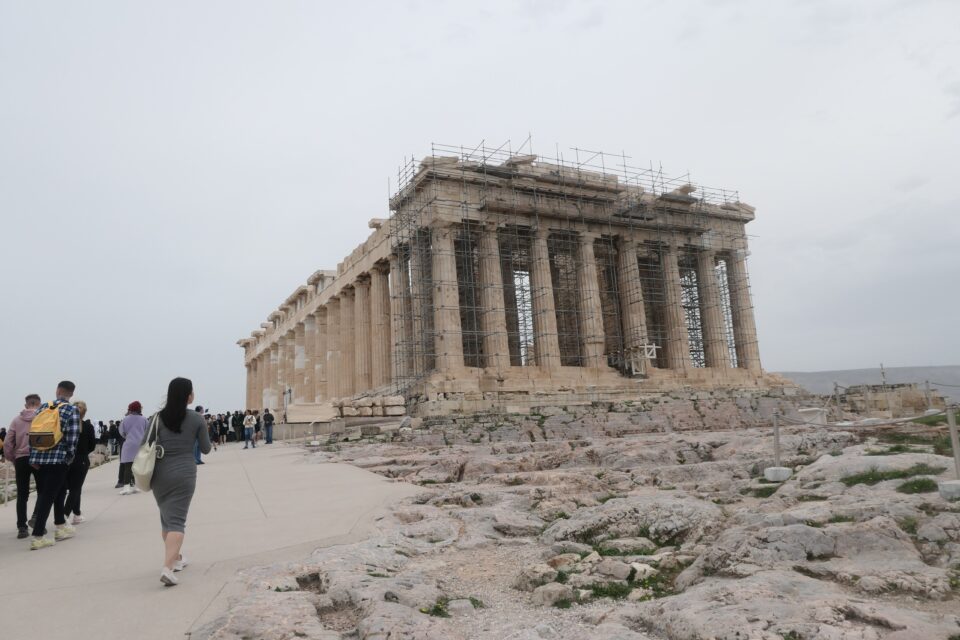
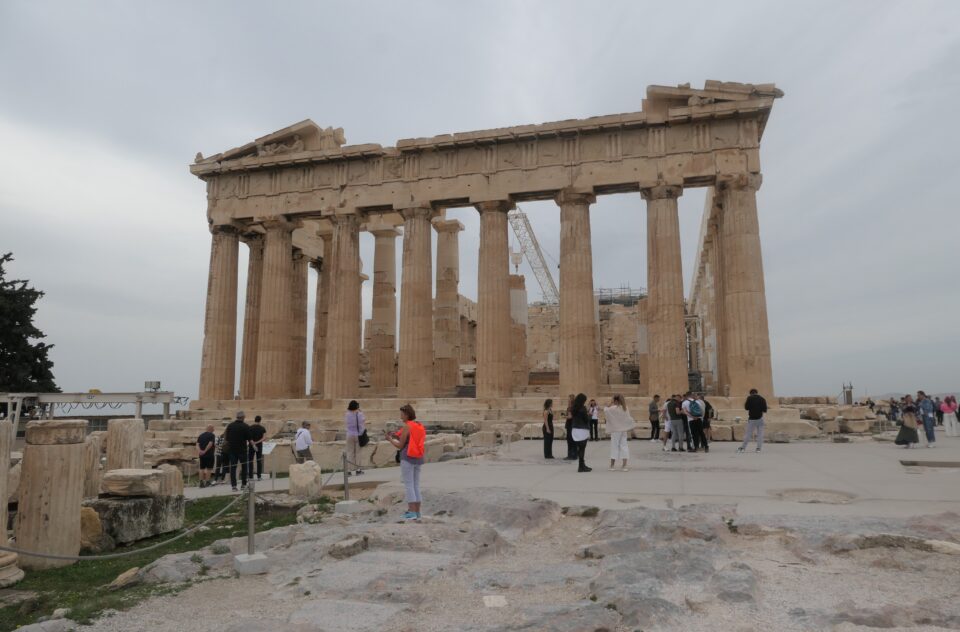

The Temple of Erechtheum stands not far from the Parthenon. It is unique in that it is asymmetrical which doesn’t conform to the rules of Greek classical architecture. It has two porches – one on the northern and one on the southern side.
The south porch, known as the Porch of the Maidens, has a roof which is held up by the statues of six women. Very spectacular.
The north porch has ionic columns. The Temple of Erechtheum, constructed from 430 to 405 BCE, was built as a replacement for an older temple, and it was used to house all the shrines and rituals from the older temple.
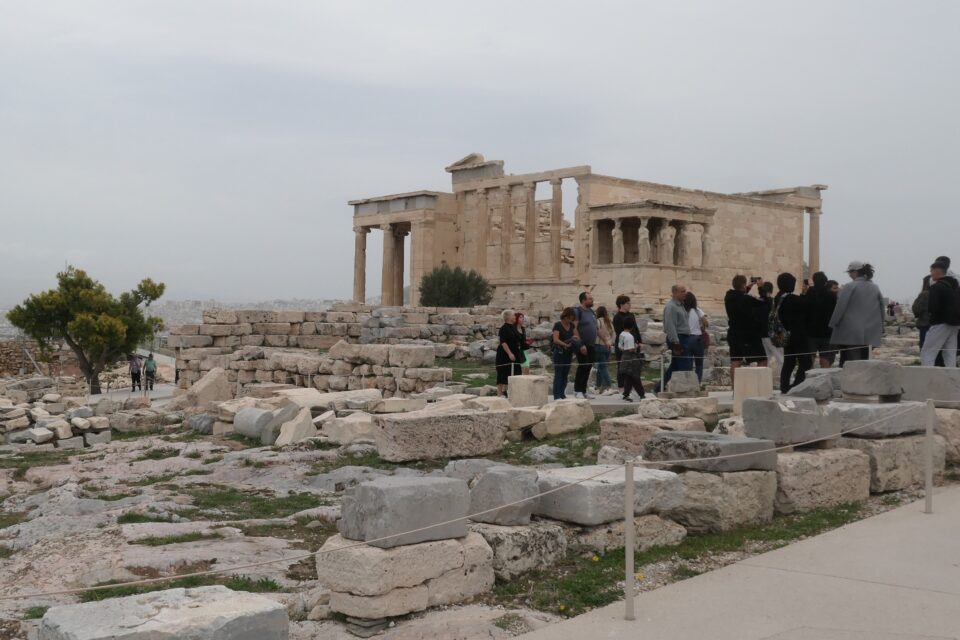
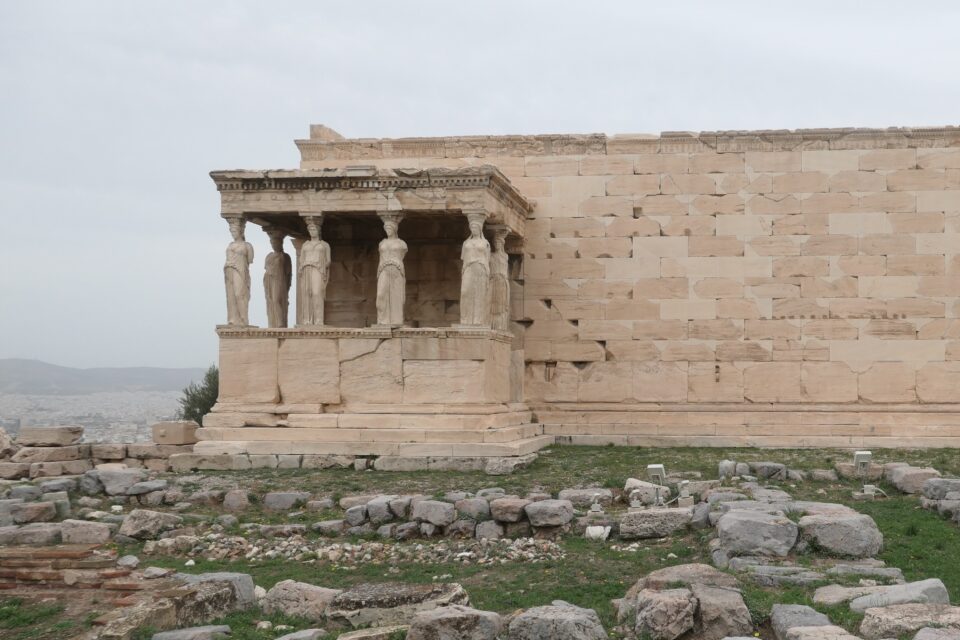
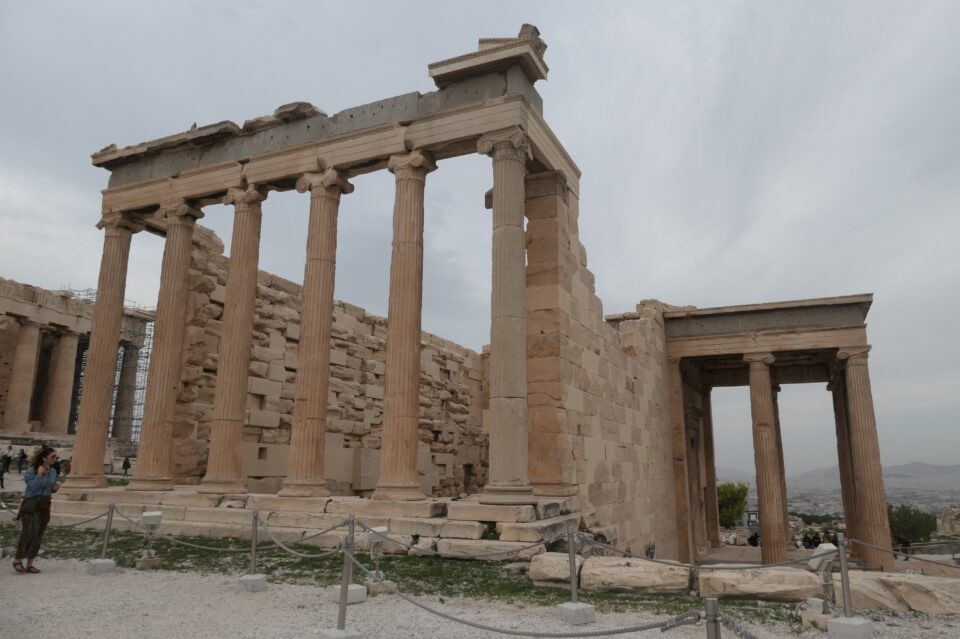
The third main building is the Temple of Athena Nike. This is the smallest temple in the Acropolis and is dedicated to the goddesses Athena and Nike. While Athena was the goddess of battle strategy and wisdom, Nike was the winged goddess of victory. Construction of this temple was finished about 420 BCE.
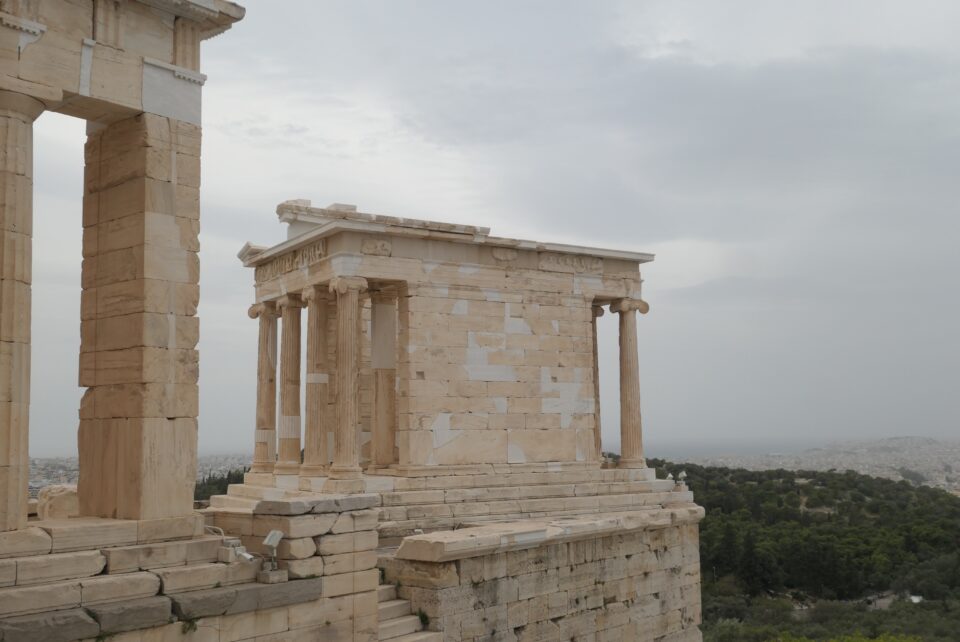
We then walked down from the Acropolis to our last site, the Theater of Dionysos, located on the south slope of the Acropolis hill. It was here that Greek plays were performed. The theater was huge, capable of accommodating 17,000 spectators.

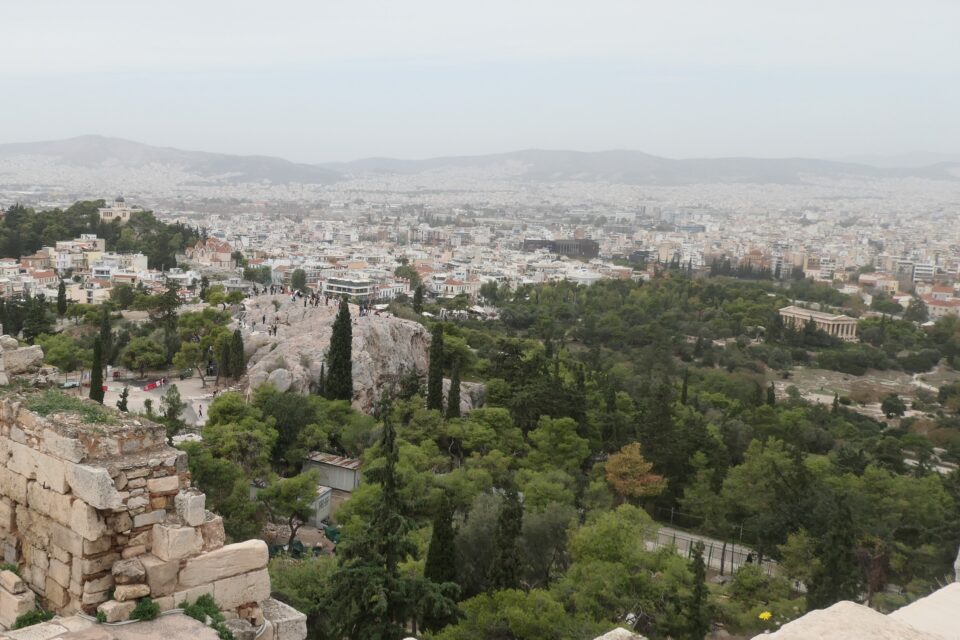

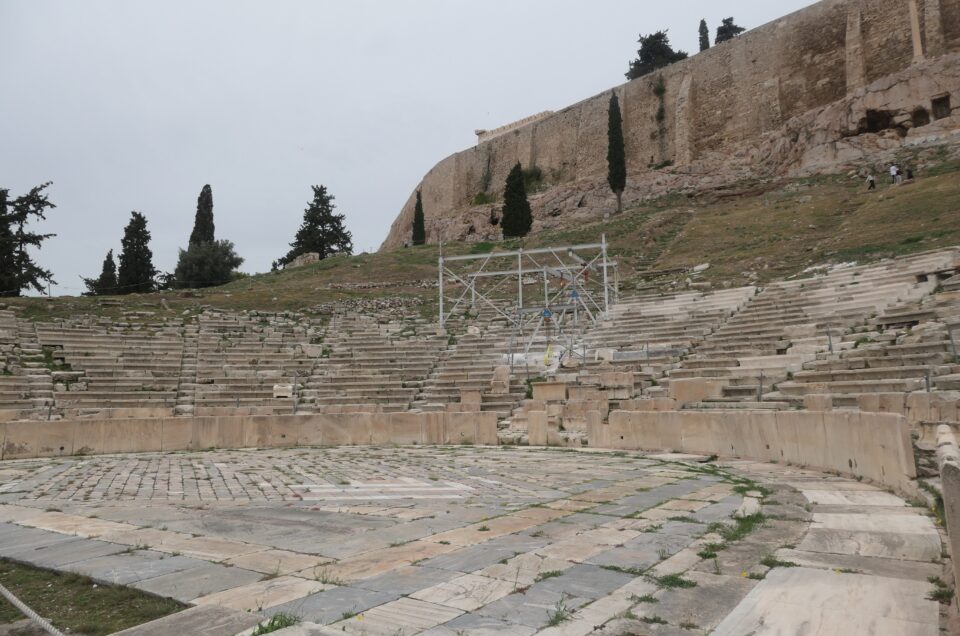
Across the street from the theater, is the new Acropolis Museum. Before visiting the museum, we went to a nearby vegan restaurant and had the vegan version of a Greek gyro. It was actually very tasty.
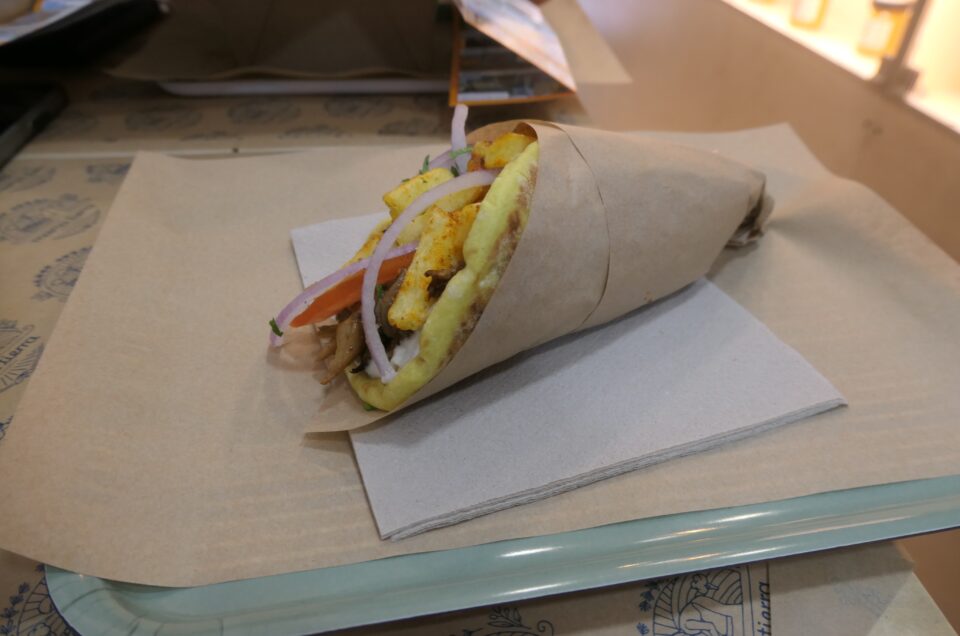
The new Acropolis Museum, opened in 2009, is an archeological museum that houses the thousands of artifacts that were found in the Acropolis. The most impressive was the third floor. First it has huge glass windows that look out onto the Acropolis.
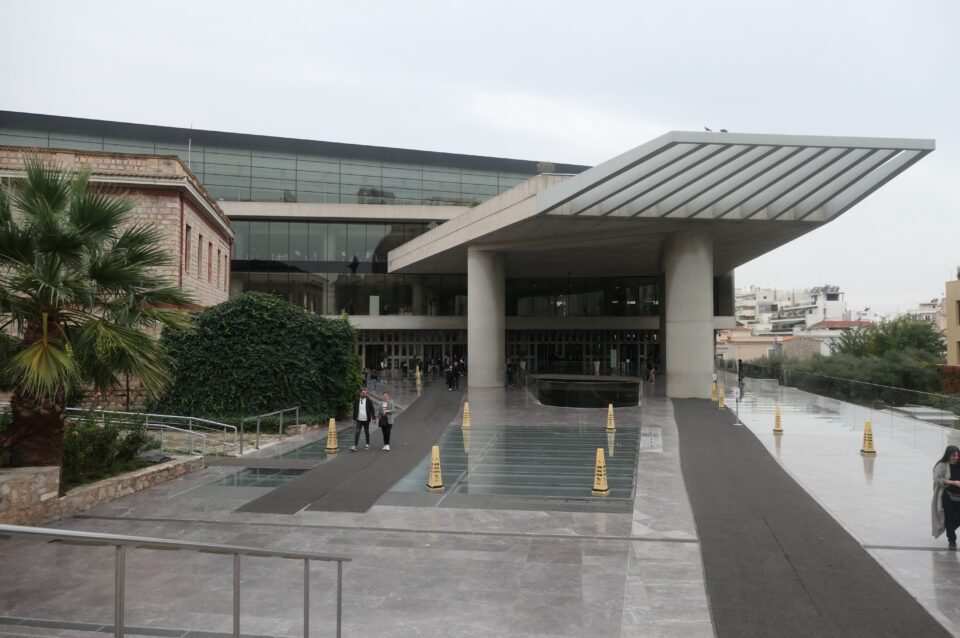
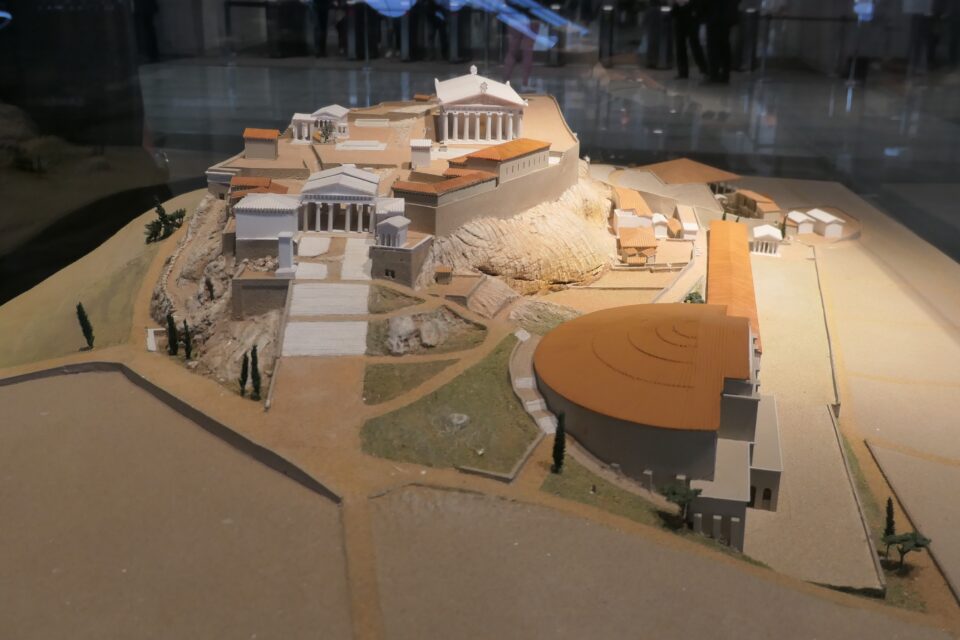
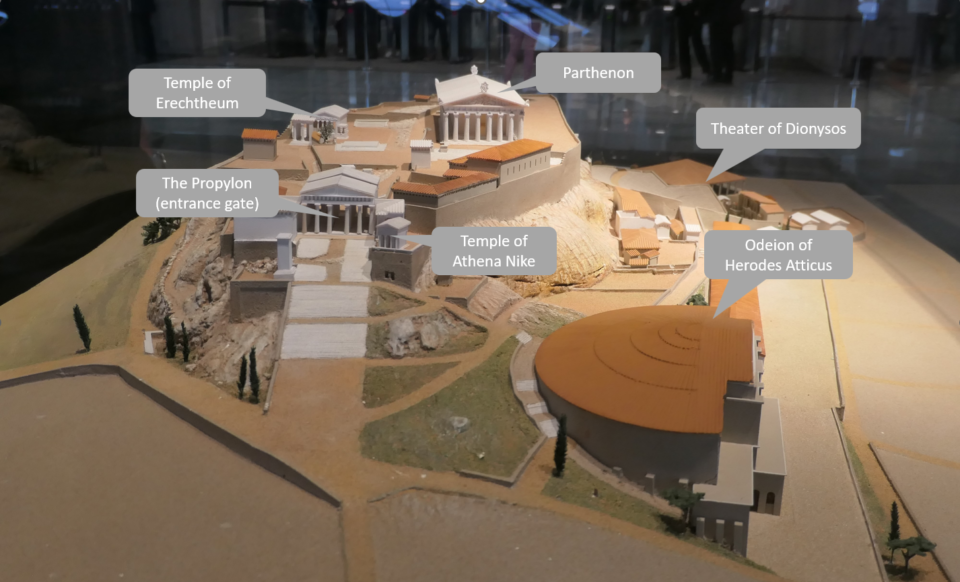
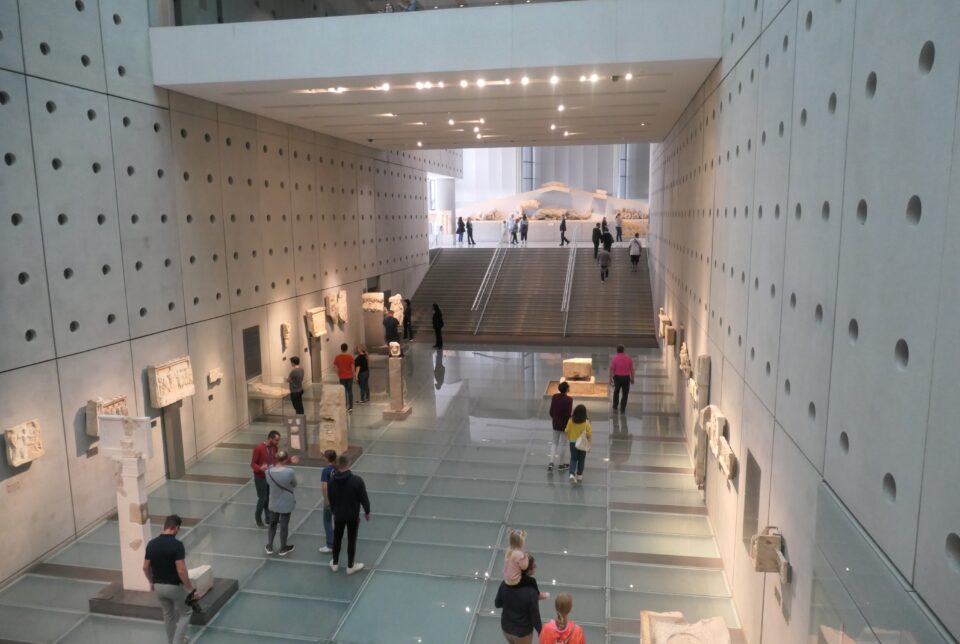
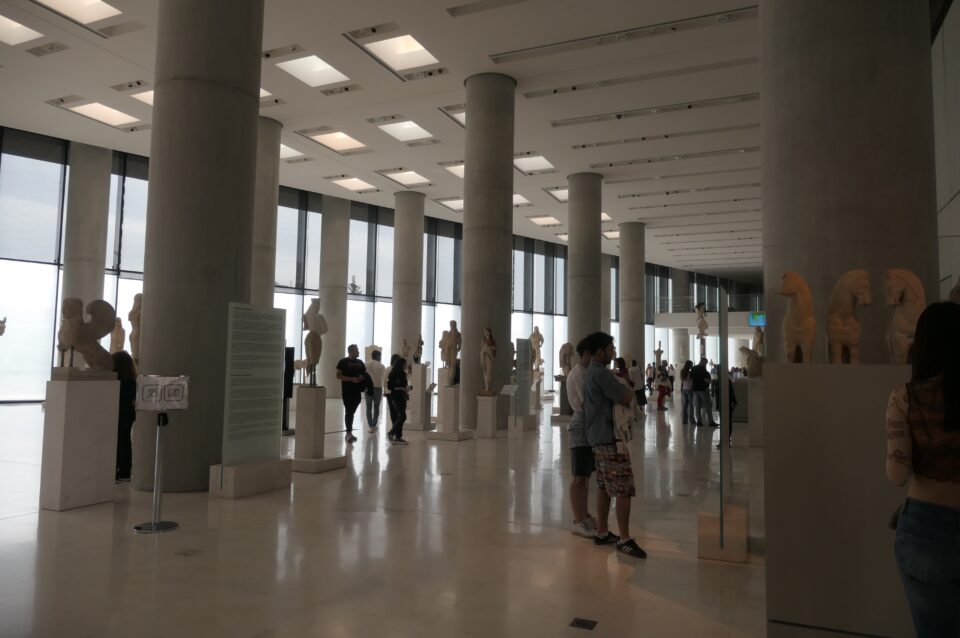

What was most special, was how they present the findings from the Parthenon. Basically, they built a rectangular structure the same size as the temple and placed all around it the findings in the same location they appear on the temple itself. Some are the actual pieces from the temple, and others are reproductions made from drawings people drew of the Parthenon over the ages. This gives you a very good understanding of how the temple might have looked.
There were three additional new words to learn when looking at the decorations of the Parthenon – pediment, metope and frieze.
Pediment is the triangular space above the columns on the entrance and back sides of the temple. In the Parthenon, each pediment had 50 statues. The metopes of the Parthenon were originally 92 square carved plaques located above the columns. The frieze was a continuous tableau of marble sculpture that ran around the entire exterior of the inner building.
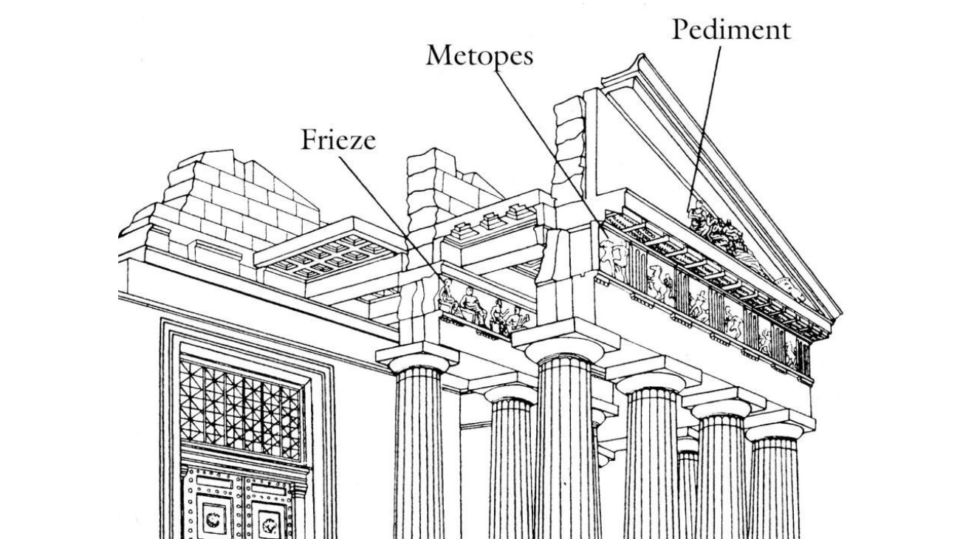
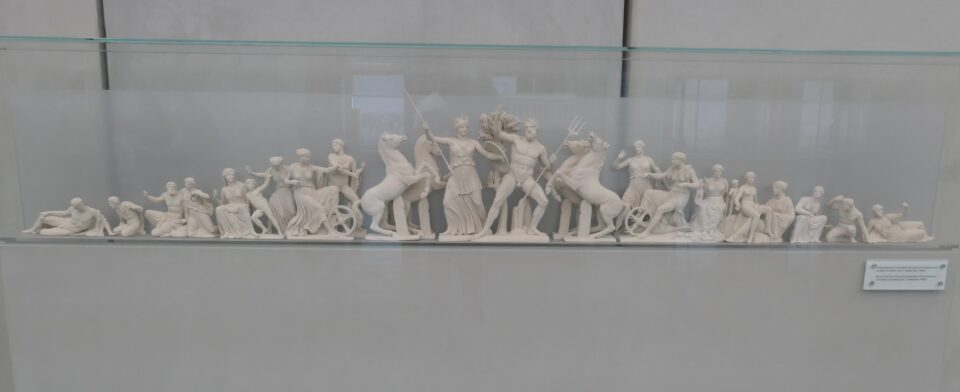
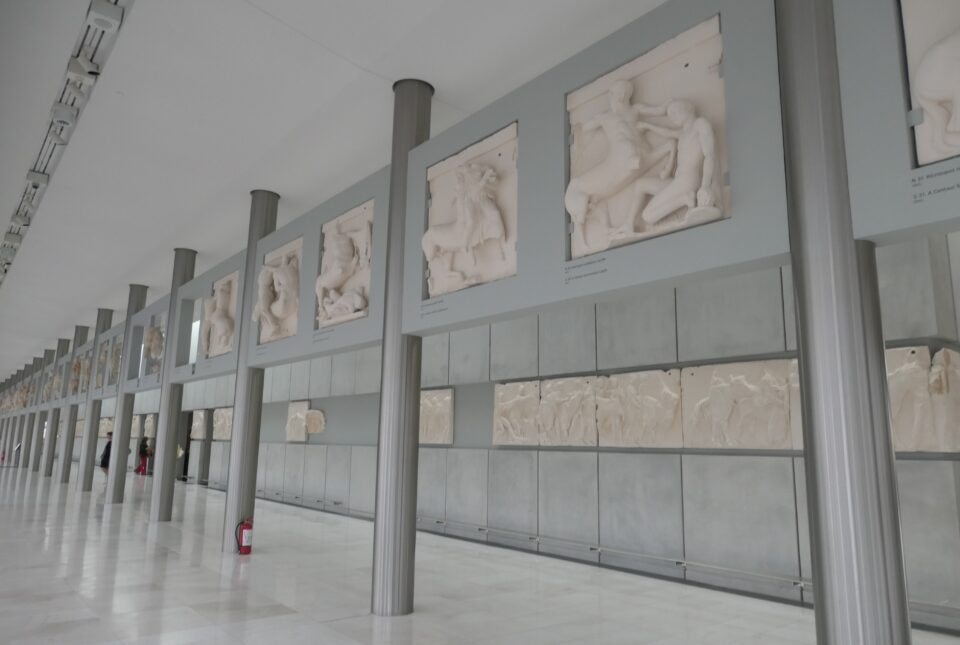
On the second floor of the museum, they have the original maidens that held up the south porch of the Temple of Erechtheum. Five of the six are displayed. The sixth is in the British Museum in London.
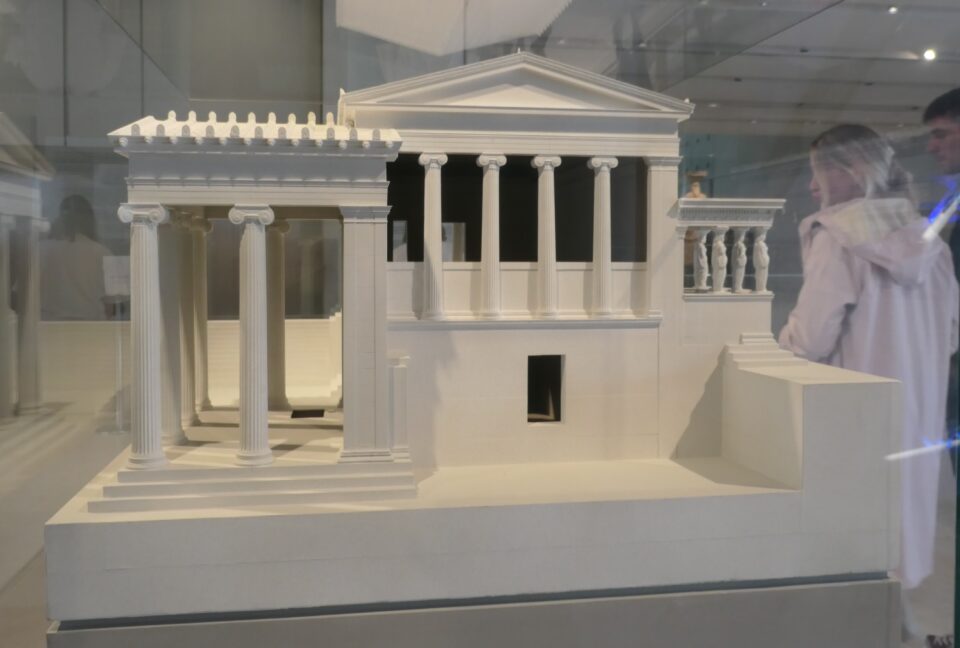
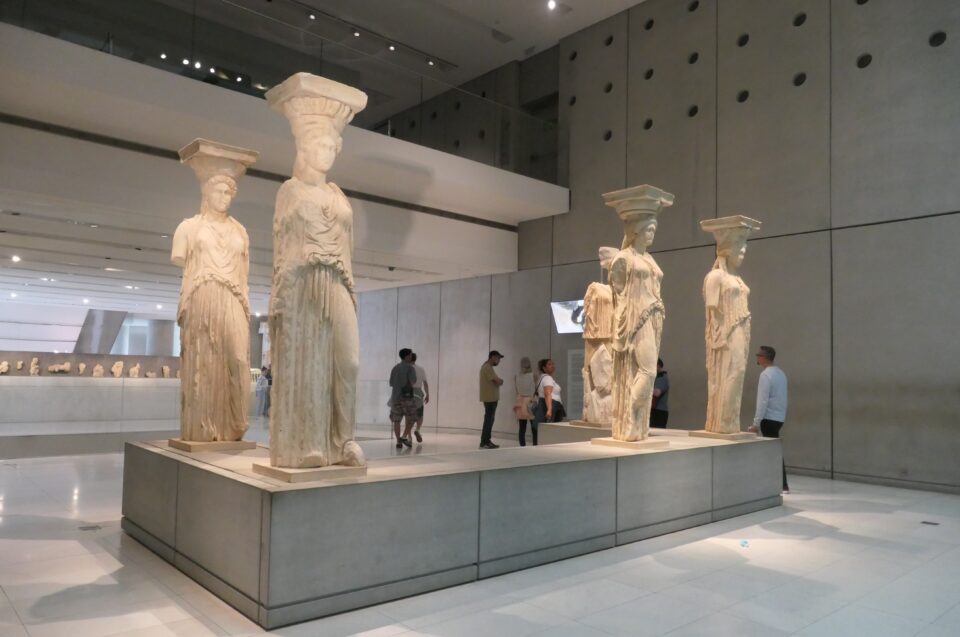
By the early 19th century, the Ottoman Empire had been the governing authority in Athens for 350 years. Lord Elgin was the British Ambassador to the Ottoman Empire who between 1801 and 1805 received permission to draw, measure and remove figures from the Acropolis. He took about half of the remaining sculptures from the temples. His collection of antiquities was then transported to Britain. Today the British Museum has 75 metres of the original 160 metres of frieze, 15 of the 92 metopes and 17 figures from the two pediments.
Although some say his intentions were noble, others credit him as the perpetrator of one of the biggest heists in history (that is how the Acropolis Museum portrays it.) A formal request for the permanent return to Greece of all the Parthenon Sculptures in the British Museum’s collection was first made in 1983, but the issue has not yet been resolved.
After spending a long time in the museum, we walked through the Plaka neighborhood. Plaka has many interesting stores, restaurants and cafés and now, as evening approached, it was full of people. We were glad to reach our apartment, it had been a long day.
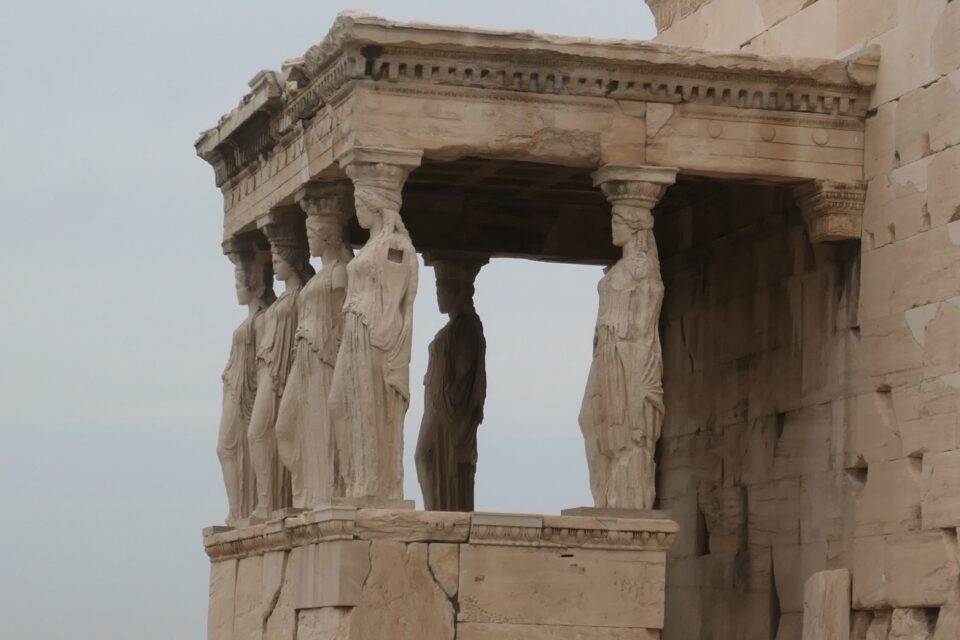
Yup saw all those “stolen” goods two weeks ago
Nice day! I remember the museum was very impressive.
The vegan gyro looks good!!
Thank you for all those wonderful explanations of all those Greek words. you are a great tour guide, Irit!!